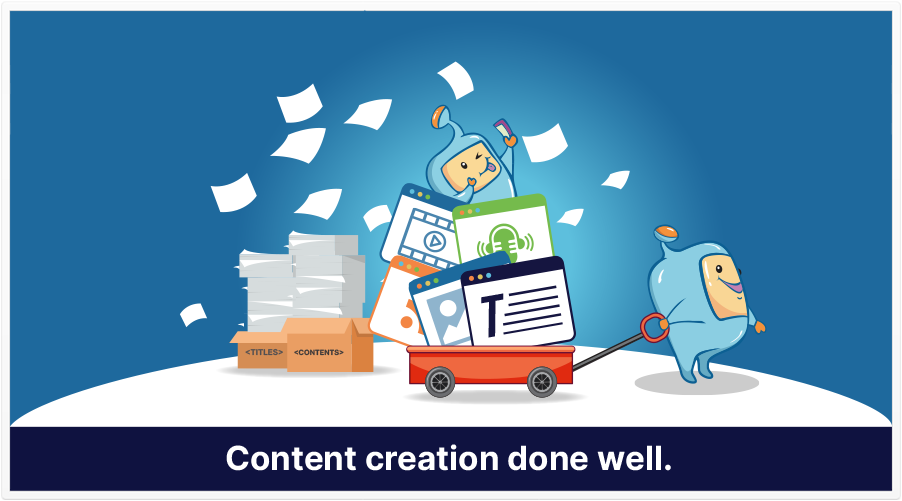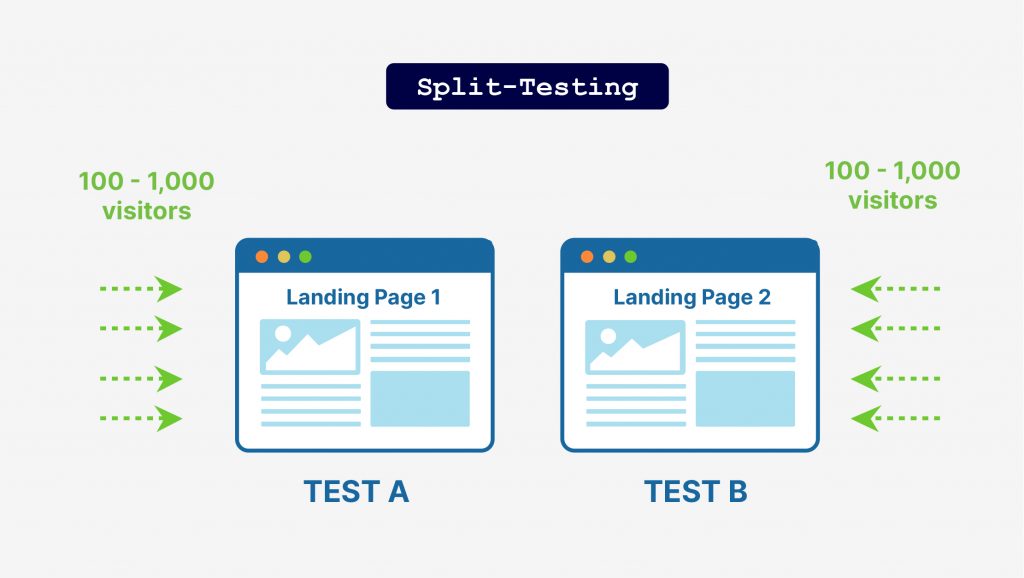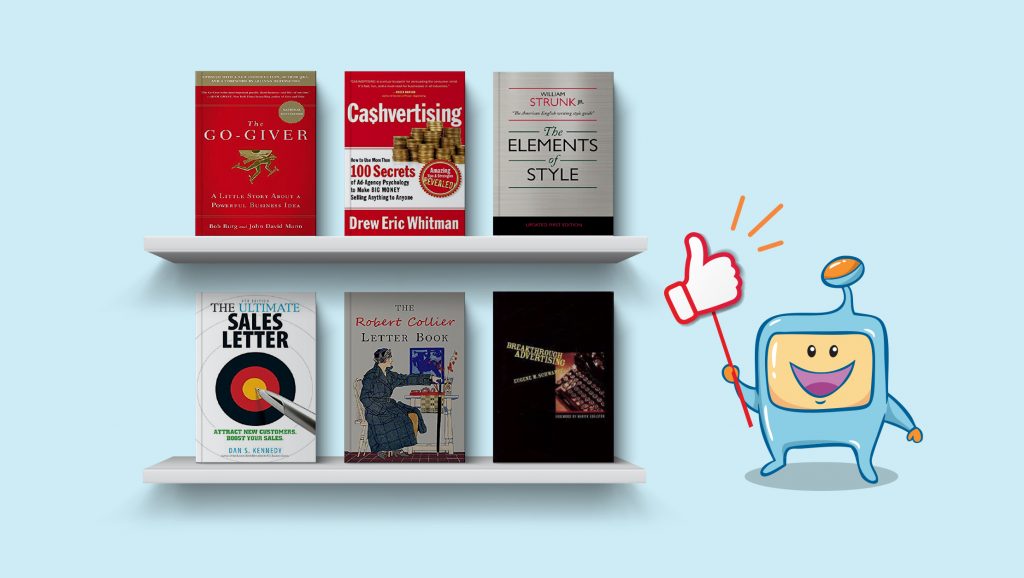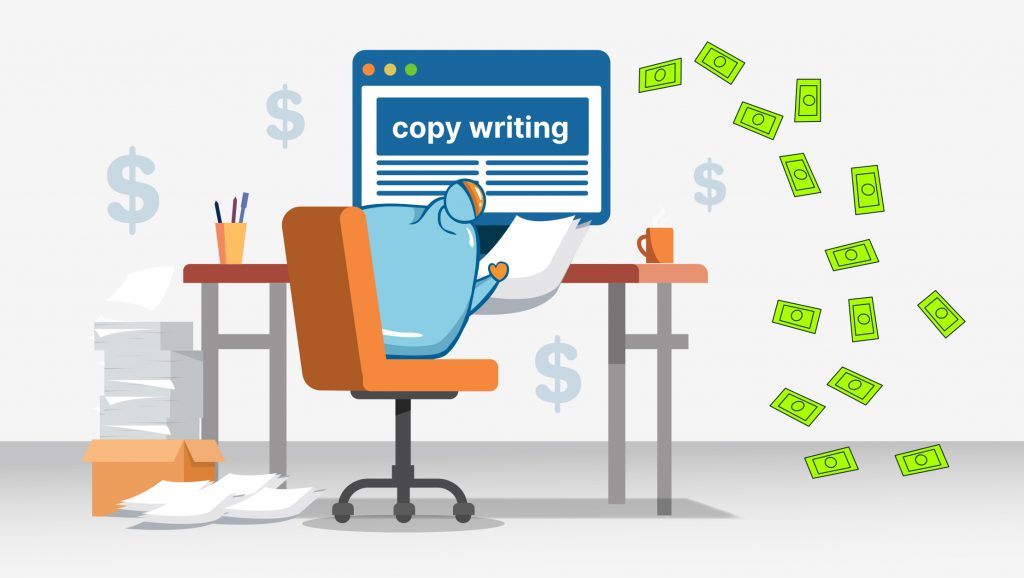
While I don’t expect you to be a salesperson, the mechanics of copywriting and sales are very very similar: a person is presented with an offer, and they either invest/buy, or not. The principles of good salesmanship also apply to copywriting.

The copywriting industry is always looking for people who can produce results. If you want to learn how to be a successful copywriter–one who understands the needs of your prospects, makes irresistible offers, and creates success, then this may be the most interesting article on this subject you ever read.
Here’s why:
There are a lot of great resources showing you how to copywrite–some of which I’ll mention here. These resources talk about the mechanics of copywriting. But, a lot of them miss something that I feel is the underlying, unseen dynamic that explains why your copywriting may (or may not be) successful.
So, exactly what is this underlying, unseen dynamic? It’s the #1 Secret to Great Copywriting. And that secret dynamic is W.T.E., which is the question:
I can hear you ask: “Okay…what?”
Let me explain it this way–and, if there’s only one thing you take from this article, it’s this: the #1 reason why anyone does anything (especially within the context of sales), is because they’re seeking a desirable experience (or to avoid an undesirable one).
Let’s use an example, and suppose you’re a professional copywriter who’s using their copywriting skills to write copy for a series of blog posts that promote a product or service.
It doesn’t really matter what that product or service is, but to illustrate things, let’s say that product is…a set of copywriting books.
And further, your readers may even say that they want that set of copywriting books.
And even though a successful percentage of the readers of your blog posts may go on to buy the books, ultimately, they don’t really want the books, even though that’s what they say.
What they really want are the experiences of what they believe the books will lead them to. Those experiences can be numerous things, but since these readers are aspiring professional copywriters, I’d say that the experiences they seek are a feeling of autonomy, a sense of accomplishment, and a feeling of confidence.
(Sure, there are many ways to word these experiences, but I think we can agree that the reason why people aspire to be copywriters is, ultimately, a variation of a feeling of success.)
Do those aspirations resonate with you? If so, good: I chose them because before writing this article, I asked myself, What’s the experience my readers are seeking?
You see, one of the first copywriting skills you should develop is this one: asking “What’s the experience that my target audience wants?”
There are 9 copywriting principles that should function as the framework you use in any type of copywriting projects you undertake:
Habits help to contribute to what you are.
So, if you want to be a great copywriter, you need to develop the habit of habitually doing things that great copywriters do.
That involves:
Depending on the scope of the promotion and the aims of the company, there are many, many things that can go into the creation of a marketing campaign for your own business that reaches prospective customers and turns them into current customers. The 15 steps I’ve detailed below can be divided into a seemingly limitless number of steps.

That said, I think that the creation of almost any sizable promotion involves the following 15 steps.

The Gary Halbert Letter, (TheGaryHalbertLetter.com) Gary Halbert is said to have been one of the most successful copywriters of all time. His Gary Halbert Letter is a treasure trove of what it’s like to be such a person.
Swiped.co is a resource of winning promotions. You can look through their catalogue and see what past promotions were like. The word swiped refers to swipe file. If you’re not sure what a swipe file is, it’s basically a term that refers to something copywriters did in the past (and continue to do today): take a file folder and, whenever they found a winning promotion (in the newspaper, in a magazine or even a phone book), they’d cut it out and place it in their file folder. That file folder was called a swipe file.
Neil Patel’s List of 75 Copywriting Resources These 75 resources are a library of information. Neil Patel has done well in compiling these, and although I haven’t looked at each of these 75 in detail, I’m happy to recommend this list to you.
I love reading books about a topic that I’m passionate about. There are many, many books on copywriting. The ones listed below are some solid ones I’d recommend.

The Go-Giver, by Bob Burg and John David Mann, is one of the most influential books I’ve ever read. It may seemingly not apply to copywriting, but I believe that if you really read it and can understand it’s message, you’ll know exactly how it applies to copy writing.
Cashvertising, by Drew Eric Whitman, is a book with dozens upon dozens of points pertaining to sales psychology. It’s a refreshing read that takes a different approach to this. It’s not a dense how-to, but rather, a packed, quick read.
Elements of Style, by William Strunk Jr. and E. B. White, is a writer’s reference book. While it may not have been written with copywriting in mind, it was written to help you communicate better with the written word. If you want to write professionally, a book like this should be in your library.
The Ultimate Sales Letter, by Dan S. Kennedy, can be thought of as a how-to for writing sales promotions. It’s been recommended by many direct-response copywriters.
The Robert Collier Letter Book, by Robert Collier, is a book that may take you time to work through, but I think it’s worth it. Depending on the edition you get, it may be a bit dense and hard to read, but it’s packed with hard-won wisdom.
Breakthrough Advertising, by Eugene M. Schwartz, is probably one of the most universally-recommended copywriting books I’ve ever seen. I think what it’s most known for is it’s Stages of Awareness. This book may be expensive, but if you take it seriously, it may be worth the investment. You can get it at BreakthroughAdvertisingBook.com
If you can write a simple sentence that has some persuasive power, then you can move onto more complex sentences that pack even more punch.
Ready…?
That’s it. That’s the sentence–or rather, a sentence. It’s a one-word sentence, and because of the lead-in I built up for it (how to write a sentence that piques curiosity), that one-word sentence hopefully either got you interested, or continued your interest.
I hope it definitely got you to want to read further. I know that because, presumably, you read the sentences above, and are reading this one.
If I had to boil it down to 2 things, I’d say that writing persuasive sentences involves:
That’s really all it boils down to. Average sentences merely state facts, which are also necessary, but you also want to continue the conversation until you lead the reader to a conclusion. As you practice, you’ll develop your own copywriting process.

There are sites such as Fiverr.com, and Guru.com where you can show your expertise.
But first, before you try to claim to be a professional freelance copywriter, you need to be certain that you can get results for your clients.
But, how do you get results for clients when you don’t have clients to begin with, when, in order to get those clients, you need to prove you’ve gotten clients?

It’s seemingly a never-ending circle.
What you can do is enroll in a copywriting course.
Then, you can write copy for one of your own projects.
Yes, you heard me right: write for yourself. In fact, that’s so important I’m going to give it it’s own heading:
If you can write profitable sales copy for yourself, then you’ve earned the right to claim that you can do it for others.
There are a few steps you can take toward writing for yourself:

As an alternative, instead of writing copy for your own product, you can become an affiliate for another company, and create your own sales letter that pre-sells their product. If your sales letter converts, then you’re a copywriter!
Once you’ve followed the advice above and proven that you have copywriting skills, you can then rightfully establish yourself as a somewhat experienced copywriter. There are numerous ways to do this.
Here are a few steps you can take to start your successful copywriting business.

Content marketing can be defined as using content (whether it be articles, an email series, white papers, videos, audios, images, etc.) to spread information about a company’s offers. A copywriter doesn’t have to just write promotional pieces–they can also do softer, informative content.
Writing white papers (assuming you have expertise and the vocabulary for that industry) are another type of content you can offer.
Have you considered that you can offer social media management to your clients and other business owners? Why not write social media posts for them?
While I don’t like the phrase ‘copywriting formulas’ (because it can imply that this is simply formulaic with no intuitive aspect), there are some proven formulas and sales letter structures that you can refer to when you’re stuck or need a boost.
It’s been said that it’s easier to sell to a current customer than it is to try to find a potential customer. That’s why you should treasure your customers. If you treat a current customer well, they may spread the word to someone else, who may be a target customer.
When doing research on your prospective customer, you should keep in mind the level of awareness they’ll have when they come across your advertising campaigns.
Unless you have a high hourly rate, you may wish to consider how you’ll be compensated, whether it be per project, monthly, or hourly. I’d say you should consider being paid per project (assuming that the pay is worth your time). That way, your pay isn’t directly tied to hours, which can free up time for you.
There are a wide variety of copywriting examples online. If you’re looking for headlines, openings, and instructions, the books recommended above are a good start.
With everything I’ve told you here, I think you now have a solid informational base on how to copywrite.
